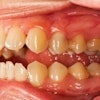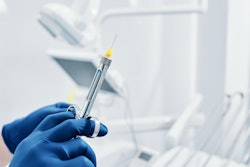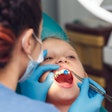
Dentists are among the leading prescribers of narcotics for moderate to severe acute pain following dental procedures. While short-term opioid prescriptions may not significantly harm the patient, failing to account for other risk factors can contribute to opioid misuse and overdoses.
In 2023, more than 110,000 people in the U.S. died from an overdose, emphasizing the severity of the ongoing opioid crisis. Aside from the opioids patients are prescribed for pain management, it is crucial that dental providers stay vigilant of potential misuse and overdose, as some people may also be using recreational substances like fentanyl and methamphetamine.
 Teresa Mendoza, PharmD.
Teresa Mendoza, PharmD.
Healthcare providers, including dental professionals, must recognize the signs of an opioid overdose: shallow breathing, cold or clammy skin, blue lips or fingertips, decreased blood pressure and heart rate, pinpoint pupils, and unconsciousness. If these signs are present, call 911 and administer naloxone.
Naloxone, an opioid antagonist, rapidly displaces the opioids, such as tramadol and hydrocodone, that are bound to the opioid receptors. It is available as a nasal spray (e.g., Narcan or RiVive) or injection, and it works quickly to reverse the life-threatening effects of opioid toxicity. This reversal agent will not work on oversedation of benzodiazepines or alcohol.
 Dr. Lisa Chan.
Dr. Lisa Chan.
While not all dental practices are required to stock naloxone, having it readily available in your emergency kit is strongly advised, especially in settings where sedation is administered. An opioid overdose can happen unexpectedly, and a quick medical response is vital to saving lives.
One potential concern that may cause some medical professionals to refrain from using naloxone is the fear of legal prosecution. However, naloxone is safe, effective, and highly recommended if any sign of toxicity is present. In most U.S. states, administration of naloxone is protected under the Good Samaritan Law, allowing healthcare providers to safely intervene in an emergency.
Keeping naloxone readily available in the dental emergency kit is the first step in combating opioid overdose. It is also equally important to assess various factors that may increase risk, such as the patient's medical history, the opioid dosage and frequency, and if it's used in combination with other medications that may cause central nervous system or respiratory depression like other narcotics, muscle relaxants, and benzodiazepines. Having access to reliable sources like the Digital Drug Handbook can help dentists and staff monitor possible drug interactions and administer naloxone effectively in critical situations.
Teresa Mendoza, PharmD, received her degree in biochemistry and a minor in Chicano/a studies from the University of California, Los Angeles (UCLA). She earned her Doctor of Pharmacy degree from the University of California, San Francisco School of Pharmacy. Mendoza has held many executive positions involving service to the community and higher education advocacy. She is a contributor to MedAssent DDS as a medical/pharmaceutical communications specialist, where she leads the blog, white paper, and continuing education content.
Dr. Lisa Chan has devoted her career to promoting equity in care in both dentistry and her community. She brings over 35 years of diverse experience in dentistry to her role. Chan received her Doctor of Dental Surgery degree from the University of Southern California Herman Ostrow School of Dentistry. Her background includes significant positions such as a hospital dentist at Kaiser Permanente, a private practice dentist in Los Angeles, and a consultant for the California State Dental Board. Chan co-founded MedAssent DDS with the mission of elevating patient safety through integrated care.
The comments and observations expressed herein do not necessarily reflect the opinions of DrBicuspid.com, nor should they be construed as an endorsement or admonishment of any particular idea, vendor, or organization.



















